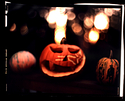DREW WILEY
Member
- Joined
- Jul 14, 2011
- Messages
- 14,539
- Format
- 8x10 Format
Yes, analog (or analogue) means an ordinary colorhead. But per Frotog's blatantly misleading series of rants ... I have no idea what specific papers automated minilabs use, nor do I know anyone who uses those kinds of marginal-quality services. Nor do I know what planet Frotog is chiming in from. But yes, right now, right at this moment, "Drew. Drew, Drew" does have forty inch-wide rolls of CAII sitting right there in his lab, and the big commercial lab down the street has even wider rolls on hand. All ya gotta do is look at Fuji's stock list or that of any serious Fuji supplier to figure that one out!! CAII is not just one product but a whole suite of them. I've even got the polyester-based Supergloss CAII on hand, and it really does deliver some rich blacks, and could even be mistaken for Cibachrome in this respect. Films have changed somewhat, and if you tend to go higher contrast/higher saturation like Ektar, color adjustment is like power steering and has to be done carefully. Maybe presents a bit of a challenge to people used to the older muddier films. And some very old colorheads have an excess amt of white light spillover that might induce a bit of crossover. But CAII is the standard line of papers being used in all serious labs around here, for both optical and digital large sizes as well as small "machine prints" in volume. Kodak still has some of the local specialty lab business. But
'scuse' me ... I better run down the road real quick and tell those folks that all those forty-inch wide color prints on their walls don't really
exist!
'scuse' me ... I better run down the road real quick and tell those folks that all those forty-inch wide color prints on their walls don't really
exist!






 ...
... 